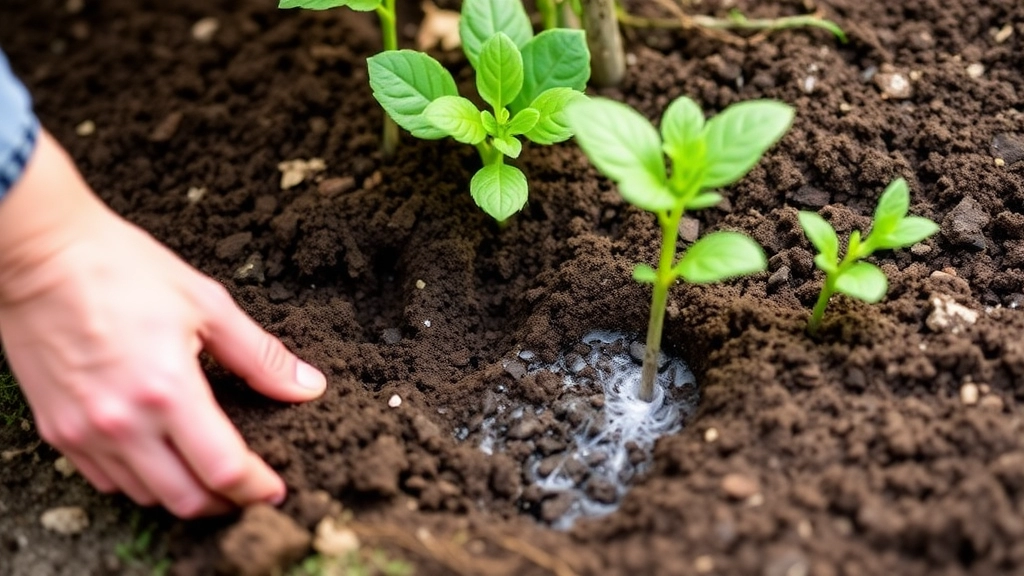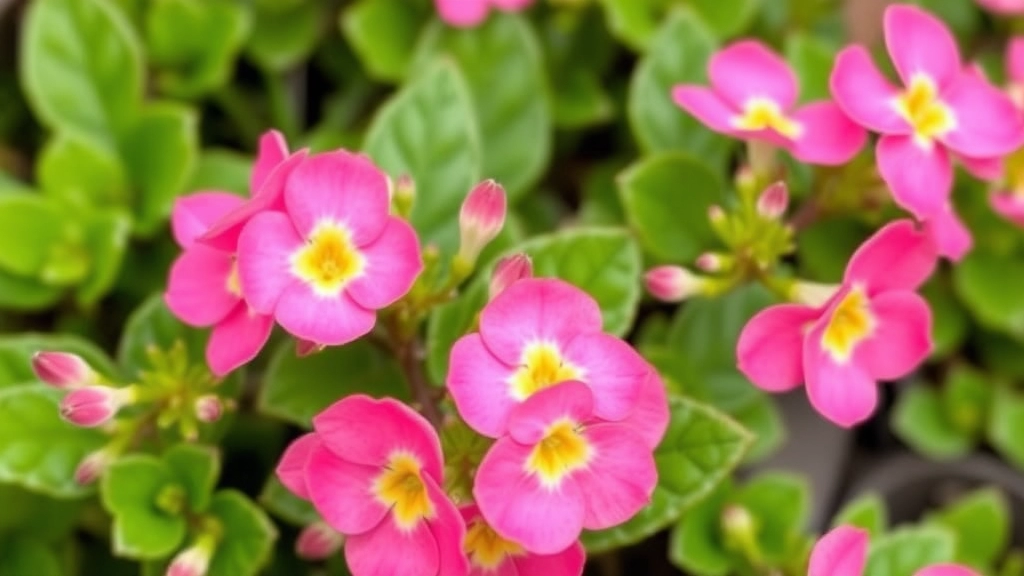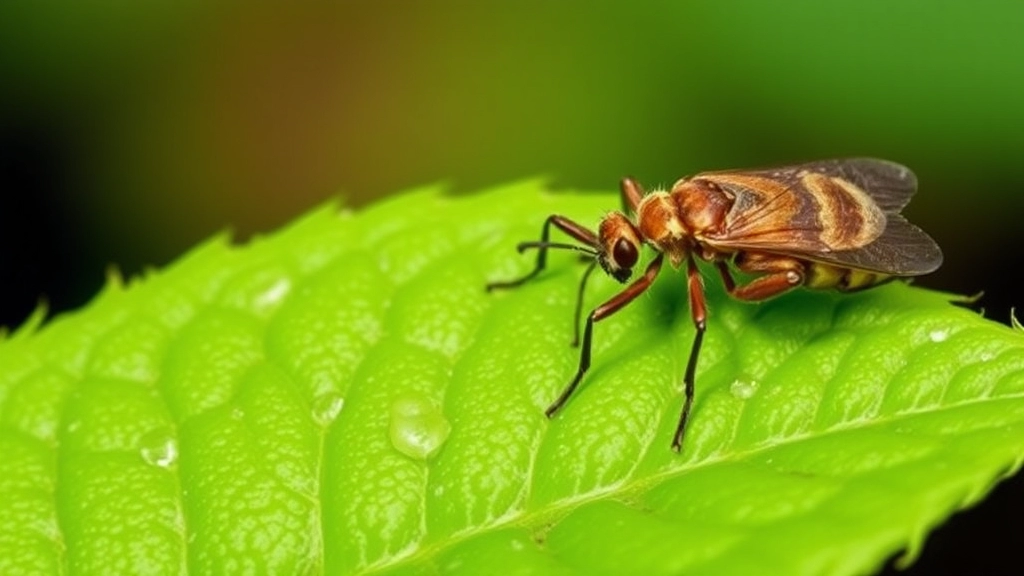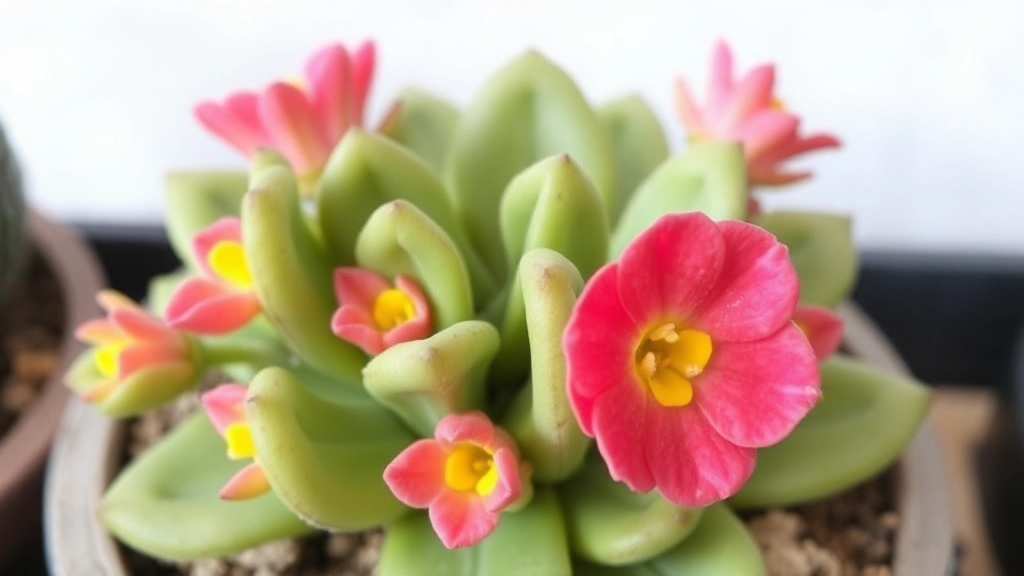Kalanchoe Blossfeldiana: A Vibrant Choice for Your Garden
When it comes to adding a splash of colour to your garden or indoor space, the Kalanchoe Blossfeldiana succulent, also known as “Flaming Katy” or “Madagascar Widow’s Thrill,” is a top choice. This vibrant plant is not only easy to care for but also offers long-lasting blooms that brighten up any environment. Whether you’re a seasoned gardener or a complete beginner, understanding the optimal growing conditions, watering needs, and light requirements is key to keeping your Kalanchoe Blossfeldiana thriving.
Essential Care Tips
To ensure your Kalanchoe Blossfeldiana succulent stays healthy and blooms beautifully, it’s essential to know the best propagation techniques and how to manage common pests. From encouraging reblooming to dealing with potential toxicity issues for pets, this guide covers everything you need to know.
What You’ll Learn
- Pruning techniques
- Creative uses in indoor decoration
- Outdoor landscaping ideas
- Common pests and management
Dive in to discover practical tips for making your gardening journey both enjoyable and successful.
Ideal Temperature and Humidity
Kalanchoe Blossfeldiana flourishes in warm environments.
- Temperature: Aim for a range of 18°C to 24°C (65°F to 75°F).
- Humidity: Moderate humidity levels are preferred, ideally between 40% and 60%.
Soil Composition
The right soil is crucial for the health of your Kalanchoe.
- Well-Draining Soil: Use a cactus or succulent mix to prevent root rot.
- pH Level: A slightly acidic to neutral pH (6.0 to 7.0) is optimal.
Air Circulation
Good air circulation is essential to prevent fungal diseases.
- Placement: Ensure your plant is in a well-ventilated area, especially during humid months.
Potting Considerations
The pot you choose can significantly impact growth.
- Size: A pot that is slightly larger than the root ball allows for growth without excess moisture retention.
- Material: Terracotta pots are ideal as they absorb moisture and promote airflow.
For more detailed information, you can refer to the optimal care for Kalanchoe Blossfeldiana growth guide. Additionally, if you’re dealing with specific leaf issues, our leaf care tips and troubleshooting article can be very helpful.
Watering and Soil Requirements

So, you’ve got your Kalanchoe Blossfeldiana, and now you’re probably wondering how to keep it thriving, right?
Watering Tips
- Less is More: Kalanchoes prefer to be on the drier side. Overwatering can lead to root rot, which is a nightmare for these beauties.
- Check the Soil: Stick your finger about an inch into the soil. If it feels dry, it’s time to water. If it’s still moist, hold off for a bit.
- Watering Schedule: In the growing season (spring and summer), water every couple of weeks. In the dormant season (fall and winter), cut back to once a month.
Soil Requirements
- Well-Draining Soil: Use a cactus or succulent mix. These allow for proper drainage and prevent the roots from sitting in water.
- DIY Mix: If you’re feeling crafty, mix regular potting soil with sand or perlite to improve drainage. A 2:1 ratio works wonders!
- Pot Choice: A pot with drainage holes is a must. This helps excess water escape and keeps the roots happy.
Light Needs: Indoor vs. Outdoor Care
Understanding the light requirements of Kalanchoe Blossfeldiana is crucial for its thriving health. Many plant enthusiasts often wonder whether their Kalanchoe will flourish indoors or outdoors.
Indoor Light Needs:
- Bright, Indirect Light: Kalanchoe prefers bright, indirect sunlight. A south or west-facing window is ideal.
- Avoid Direct Sun: Too much direct sunlight can scorch the leaves, leading to brown patches.
- Supplement with Grow Lights: If natural light is insufficient, consider using grow lights for about 12-14 hours a day.
Outdoor Light Needs:
- Partial Shade: When grown outdoors, Kalanchoe does best in partial shade, especially during the hottest part of the day.
- Morning Sun: A few hours of morning sun is beneficial, promoting healthy growth without the risk of sunburn.
- Protection from Harsh Conditions: If you live in a particularly sunny or hot area, ensure your Kalanchoe is shielded from extreme conditions.
Remember, the right light conditions not only enhance the plant’s appearance but also encourage blooming. For more detailed guidance, check out our Optimal Care for Kalanchoe Blossfeldiana Growth and Yellow Kalanchoe Blossfeldiana Care Guide.
How to Encourage Reblooming in Kalanchoe Blossfeldiana

After ensuring your Kalanchoe Blossfeldiana is thriving in optimal conditions, you may wonder how to encourage it to rebloom. This lovely succulent can produce vibrant flowers multiple times a year with the right care.
Understand the Blooming Cycle
Kalanchoe Blossfeldiana typically blooms in the winter and early spring. To stimulate further blooming, consider the following steps:
- Light Control: Ensure your plant receives 12-14 hours of bright, indirect sunlight daily. If indoors, a south-facing window is ideal. For outdoor plants, partial shade can prevent scorching while still allowing ample light.
- Temperature Management: Maintain a temperature range of 15-25°C (59-77°F). Sudden temperature drops can hinder blooming.
- Watering Routine: Allow the soil to dry out between waterings. Overwatering can lead to root rot, while underwatering can stress the plant, both of which affect blooming.
- Fertilization: Use a balanced, water-soluble fertiliser every four weeks during the growing season (spring and summer). This provides the necessary nutrients for flower production.
- Pruning: After the initial blooming period, prune away spent flowers and any leggy growth. This encourages new growth and can promote further blooms.
- Rest Period: After flowering, give your plant a rest period. Reduce watering and stop fertilising for about six weeks. This allows the plant to conserve energy for the next blooming cycle.
By following these steps, you can encourage your Kalanchoe Blossfeldiana to showcase its beautiful flowers repeatedly.
Propagation Techniques: Stem Cuttings and Offsets
When considering how to expand your collection of Kalanchoe Blossfeldiana, propagation is a rewarding and straightforward process. Many enthusiasts worry about the best methods to ensure successful growth. Fortunately, both stem cuttings and offsets offer reliable ways to propagate this charming succulent.
Stem Cuttings
Taking stem cuttings is one of the most popular methods for propagating Kalanchoe. Here’s how to do it:
- Select a Healthy Stem: Choose a healthy, mature stem from the parent plant.
- Make the Cut: Using clean, sharp scissors, cut a 10-15cm section from the stem. Ensure the cut is made just below a leaf node.
- Allow to Callus: Place the cutting in a dry, warm location for a few days. This allows the cut end to callus over, reducing the risk of rot.
- Plant in Soil: Once the end has callused, plant it in well-draining soil. A cactus mix works well.
- Water Sparingly: Water lightly, allowing the soil to dry out between watering.
Offsets
Offsets, or “pups,” are small plants that grow at the base of the parent plant. They can be easily separated and planted. Here’s how to do it:
- Identify Offsets: Look for small plants growing around the base of your Kalanchoe.
- Gently Remove: Carefully dig around the base of the offset and gently pull it away from the parent plant, ensuring you don’t damage the roots.
- Plant in Soil: Place the offset in a pot with well-draining soil.
- Water and Care: Water lightly and provide bright, indirect light as it establishes.
By mastering these propagation techniques, you can grow your Kalanchoe collection and share it with friends or use it to beautify your space. For more detailed care instructions, check out our Yellow Kalanchoe Blossfeldiana Care Guide and our comprehensive Ultimate Guide to Kalanchoe Blossfeldiana Hybrid Care.
Common Pests and How to Manage Them

So, you’ve got your Kalanchoe Blossfeldiana thriving, but suddenly you spot some unwanted guests.
What should you do?
Don’t worry; it’s a common issue, and I’ve got your back.
Common Pests
- Mealybugs
- These little white fluff balls are sneaky and love to hide in leaf joints.
- They suck the sap, which can weaken your plant.
- Aphids
- Tiny and often green, these pests can be found on new growth.
- They reproduce quickly and can cause significant damage.
- Spider Mites
- If you notice fine webbing on your plant, you might have spider mites.
- They thrive in dry conditions and can lead to leaf drop.
- Scale Insects
- These pests look like small bumps on the stems and leaves.
- They can be hard to spot but are just as damaging.
Management Tips
- Regular Inspections
- Check your Kalanchoe weekly. Catching pests early makes a world of difference.
- Neem Oil
- A natural remedy that works wonders. Mix it with water and spray on infected areas.
- How to Use:
- Dilute 1-2 tablespoons of neem oil in a litre of water.
- Spray in the early morning or late evening to avoid leaf burn.
- Insecticidal Soap
- This is another effective solution. It suffocates pests without harming your plant.
- How to Use:
- Mix soap and water, spray directly on the pests, and rinse off after a few hours.
- Manual Removal
- For mealybugs and scale, you can wipe them off with a cotton swab dipped in alcohol.
- This method is great for small infestations.
- Maintain Humidity
- Spider mites love dry air. Increasing humidity can deter them.
- Try misting your plant or placing it on a pebble tray with water.
VII. Pruning and Maintenance Tips for Kalanchoe Blossfeldiana
Maintaining your Kalanchoe Blossfeldiana is essential for its health and vibrant blooms. You might wonder how to keep your plant thriving and looking its best. Let’s dive into some straightforward pruning and maintenance tips that will help you achieve just that.
Why Prune?
Pruning is crucial for several reasons:
- Encourages New Growth: Removing dead or wilted leaves stimulates fresh growth.
- Improves Air Circulation: Thinning out dense foliage helps prevent fungal diseases.
- Enhances Aesthetics: A well-pruned plant looks fuller and more appealing.
When to Prune
- After Blooming: The best time to prune is right after your Kalanchoe has finished blooming. This is when it can benefit most from rejuvenation.
- Regular Maintenance: Keep an eye on your plant throughout the year. If you notice any dead or damaged leaves, don’t hesitate to trim them away.
How to Prune
- Use Clean Tools: Always use sharp, clean scissors or pruning shears to avoid introducing diseases.
- Cut at the Base: Trim leaves and stems at their base to encourage new growth.
- Remove Dead Flowers: Snip off spent flowers to promote further blooming.
- Thin Out Crowded Areas: If your plant looks too bushy, selectively remove some stems to improve air flow.
Maintenance Tips
- Watering: Ensure you’re not overwatering. Allow the soil to dry out between waterings.
- Soil Care: Use a well-draining potting mix to prevent root rot.
- Fertilisation: Feed your Kalanchoe with a balanced fertiliser every month during the growing season.
For more detailed guidance, you can check out our Ultimate Guide to Kalanchoe Blossfeldiana Hybrid Care or read our Yellow Kalanchoe Blossfeldiana Care Guide.
Creative Uses: Indoor Decoration and Outdoor Landscaping

So, you’ve got your Kalanchoe Blossfeldiana thriving, and you’re probably wondering how to show it off, right? Whether you’re looking to jazz up your indoor space or add some flair to your garden, these vibrant plants have got you covered.
Indoor Decoration Ideas
- Table Centrepiece:
- Pop a Kalanchoe in a pretty pot and place it on your dining table.
- It’s an instant conversation starter!
- Window Sills:
- They love bright light, so a sunny window is perfect.
- Group several plants together for a lush look.
- Shelving Units:
- Mix them with books and other decor for a stylish shelf display.
- The colours really pop against neutral backgrounds.
- Office Desk:
- A small Kalanchoe can brighten up your workspace.
- Plus, it helps improve air quality!
Outdoor Landscaping Ideas
- Garden Borders:
- Plant them along pathways or borders for a splash of colour.
- They create a lovely contrast with green foliage.
- Rock Gardens:
- Their drought-resistant nature makes them perfect for rock gardens.
- They thrive in well-drained soil and add a unique touch.
- Container Gardens:
- Mix Kalanchoe with other succulents in pots for a vibrant display.
- You can easily move them around to change up your outdoor space.
- Hanging Baskets:
- These beauties can also be used in hanging baskets.
- They’ll cascade beautifully and draw the eye upwards.
Toxicity Considerations for Pets and Safety Tips
As we delve into the care of Kalanchoe Blossfeldiana, it’s essential to address a significant concern for pet owners: the plant’s toxicity.
Many pet lovers worry about the safety of their furry friends around houseplants.
Is Kalanchoe Blossfeldiana Poisonous to Pets?
Yes, Kalanchoe Blossfeldiana is considered toxic to cats and dogs.
Here are some key points to keep in mind:
- Symptoms of Toxicity: Ingesting any part of the plant can lead to symptoms such as:
- Vomiting
- Diarrhoea
- Lethargy
- Abdominal pain
- Immediate Action: If you suspect your pet has consumed Kalanchoe, contact your veterinarian immediately.
Safety Tips for Pet Owners
To ensure a safe environment for your pets while enjoying the beauty of Kalanchoe Blossfeldiana, consider the following:
- Placement:
- Keep the plant out of reach of pets, ideally on high shelves or in rooms that are off-limits to them.
- Alternative Plants:
- If you’re looking for pet-friendly options, consider non-toxic plants such as spider plants or Boston ferns.
- Education:
- Educate family members about the toxicity of Kalanchoe and encourage them to supervise pets around houseplants.
By taking these precautions, you can enjoy your Kalanchoe Blossfeldiana without compromising your pets’ safety.
FAQs on Kalanchoe Blossfeldiana Succulent
How often should I water my Kalanchoe Blossfeldiana?
Less is more when it comes to watering Kalanchoe Blossfeldiana. During the growing season (spring and summer), water every couple of weeks. In the dormant season (fall and winter), reduce watering to once a month.
What type of soil is best for Kalanchoe Blossfeldiana?
Use well-draining soil, such as a cactus or succulent mix. You can also create a DIY mix by combining regular potting soil with sand or perlite in a 2:1 ratio.
How can I encourage my Kalanchoe Blossfeldiana to rebloom?
To encourage reblooming, ensure your plant gets 12-14 hours of bright, indirect sunlight daily, maintain a temperature range of 15-25°C (59-77°F), and follow a proper watering and fertilizing schedule. Prune spent flowers and allow the plant a rest period after blooming.
What are common pests that affect Kalanchoe Blossfeldiana?
Common pests include mealybugs, aphids, spider mites, and scale insects. Regular inspections and treatments with neem oil or insecticidal soap can help manage these pests.
How can I use Kalanchoe Blossfeldiana for indoor decoration?
Kalanchoe Blossfeldiana can be used as a table centerpiece, on window sills, shelving units, or even on your office desk. Their vibrant colors and easy maintenance make them a great addition to any indoor space.
Can Kalanchoe Blossfeldiana be used in outdoor landscaping?
Yes, Kalanchoe Blossfeldiana is perfect for outdoor landscaping. They can be planted along garden borders, in rock gardens, container gardens, or even in hanging baskets. Their drought-resistant nature makes them ideal for various outdoor settings.
What are the signs of overwatering in Kalanchoe Blossfeldiana?
Signs of overwatering include yellowing leaves, mushy stems, and root rot. Always check the soil moisture before watering and ensure the pot has drainage holes to prevent waterlogging.
How do I manage pests on my Kalanchoe Blossfeldiana?
Regular inspections are crucial. Use neem oil or insecticidal soap to treat infestations. For mealybugs and scale, manual removal with a cotton swab dipped in alcohol can be effective. Increasing humidity can help deter spider mites.
What is the ideal temperature range for Kalanchoe Blossfeldiana?
The ideal temperature range is 15-25°C (59-77°F). Avoid sudden temperature drops as they can hinder blooming and overall plant health.
How do I create a DIY soil mix for Kalanchoe Blossfeldiana?
Mix regular potting soil with sand or perlite in a 2:1 ratio. This improves drainage, ensuring the roots do not sit in water, which is crucial for the health of Kalanchoe Blossfeldiana.
References
-
How to Care for Kalanchoe Blossfeldiana
-
Kalanchoe Plant Care â Tips For Growing Kalanchoe Plants
-
Kalanchoe: How to Grow and Care for Kalanchoe Plants
